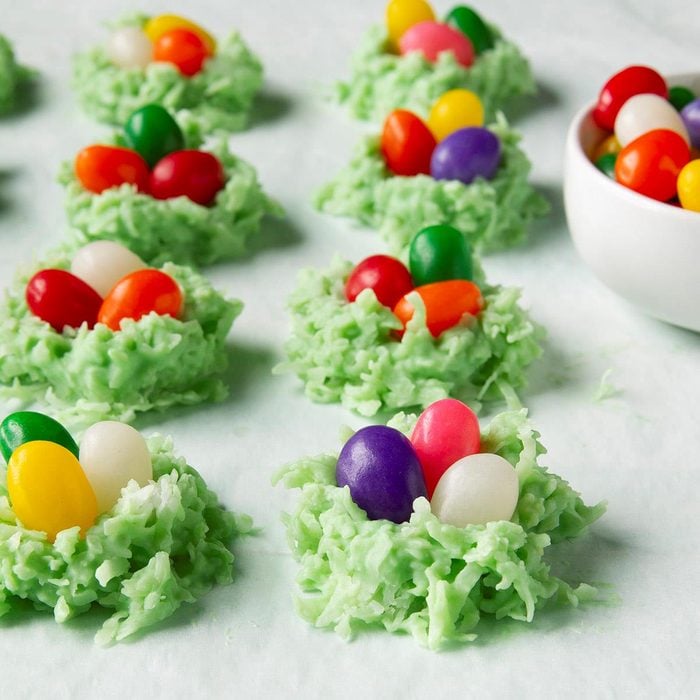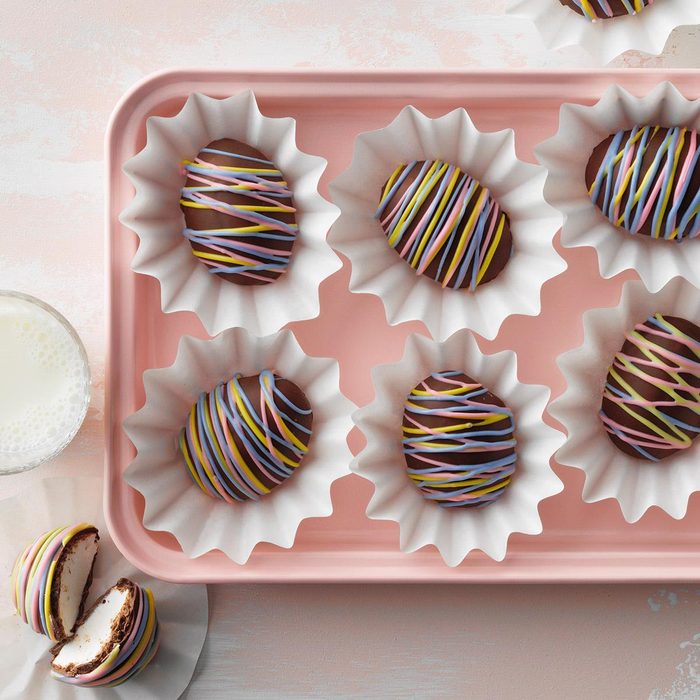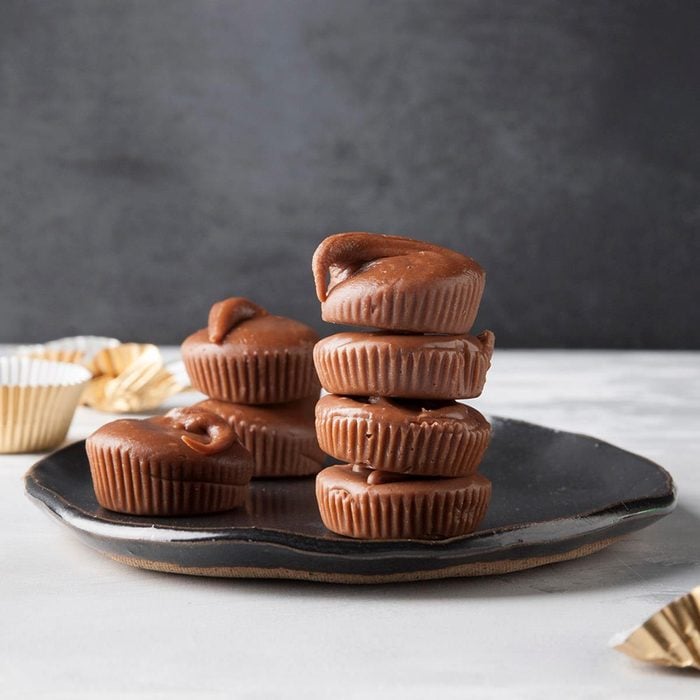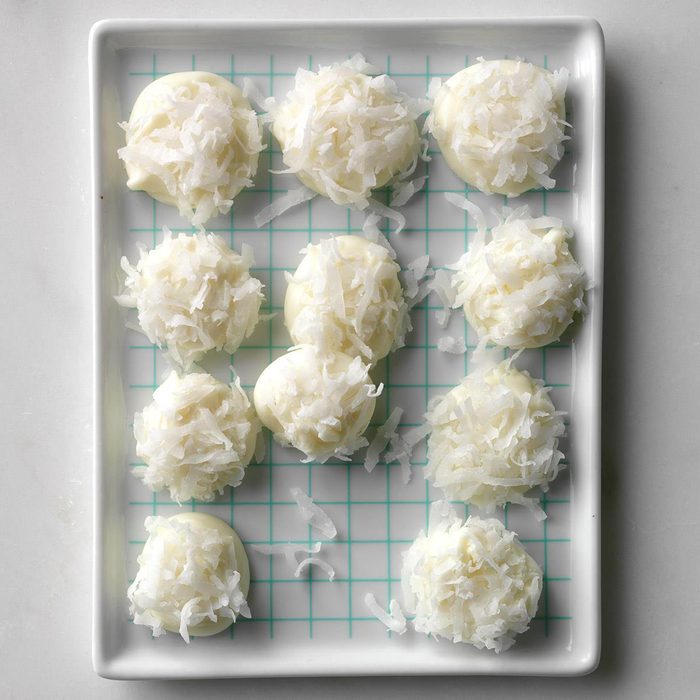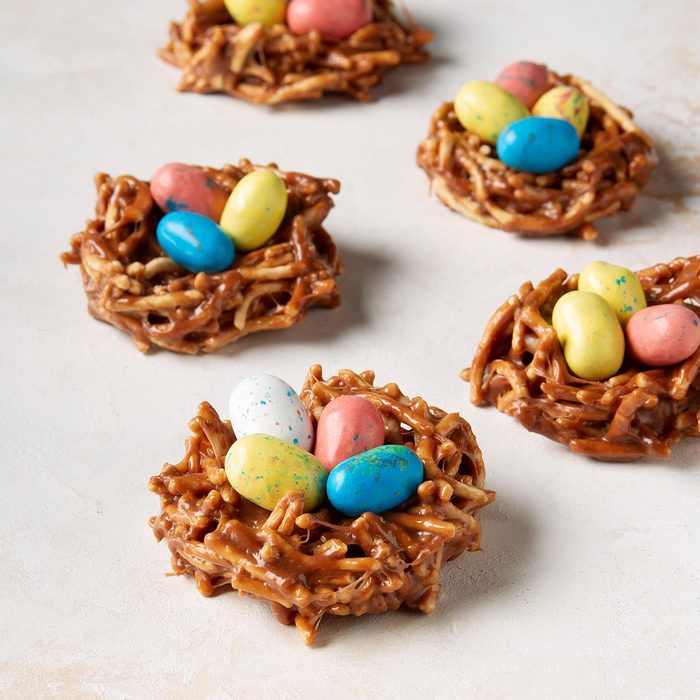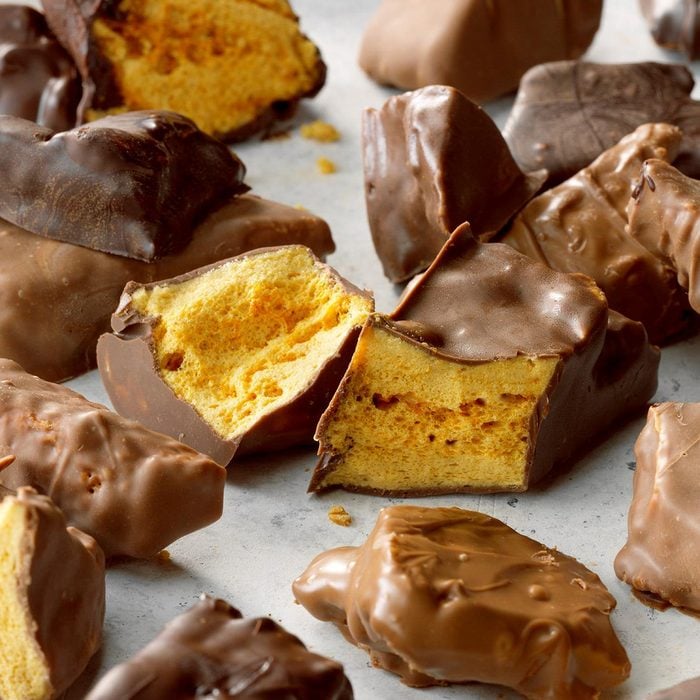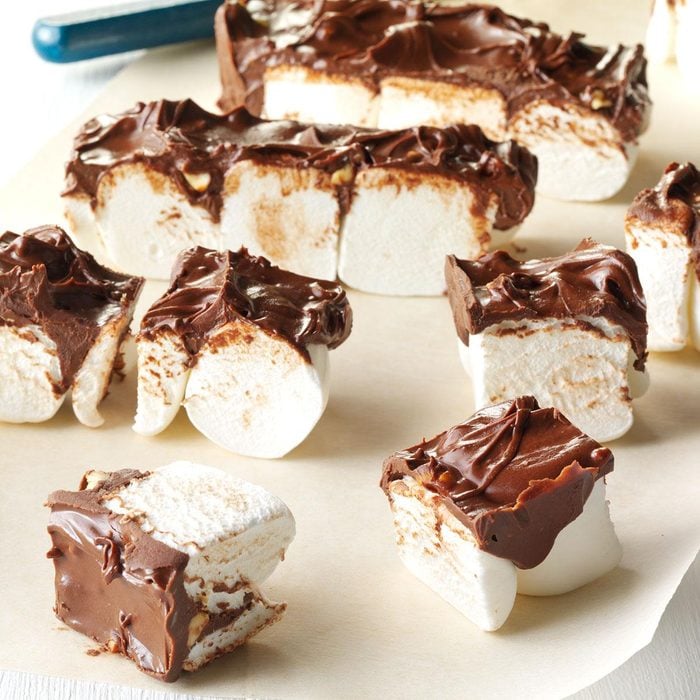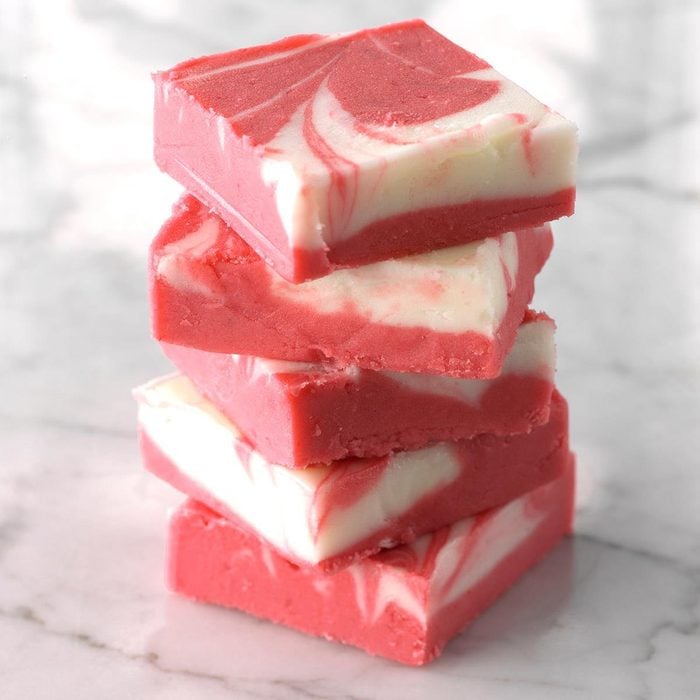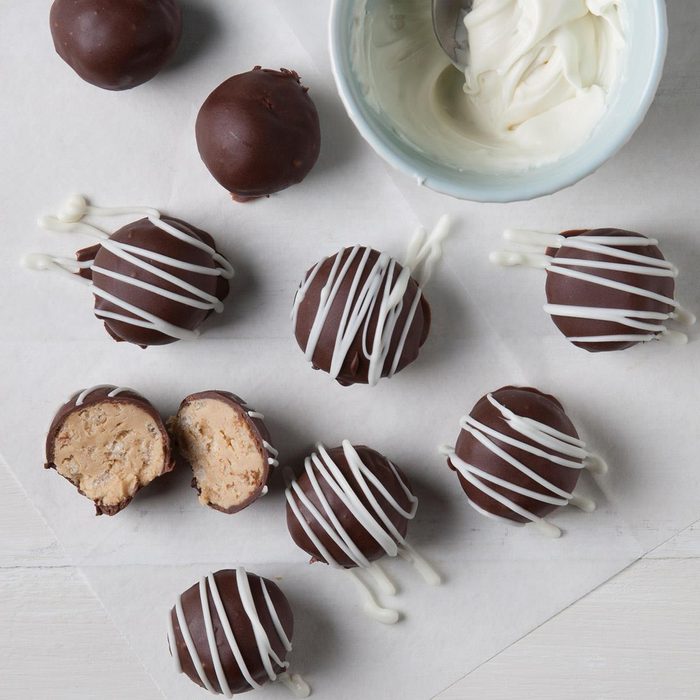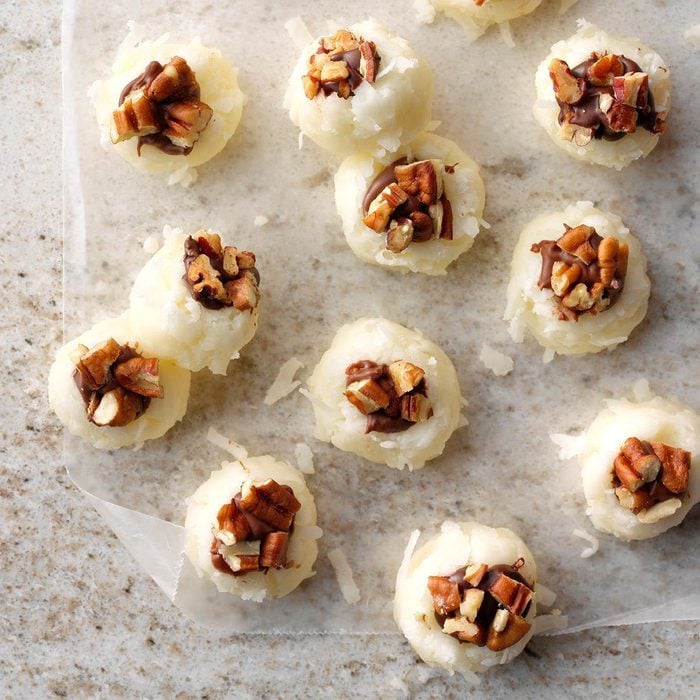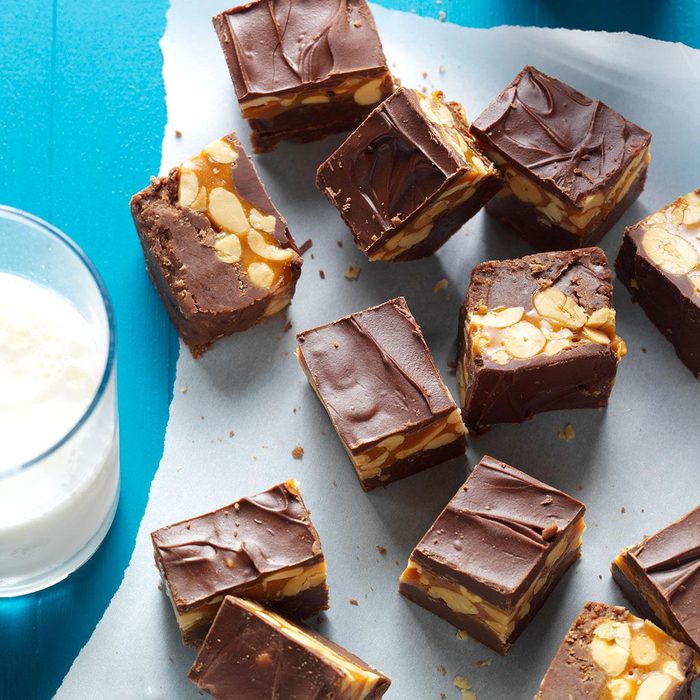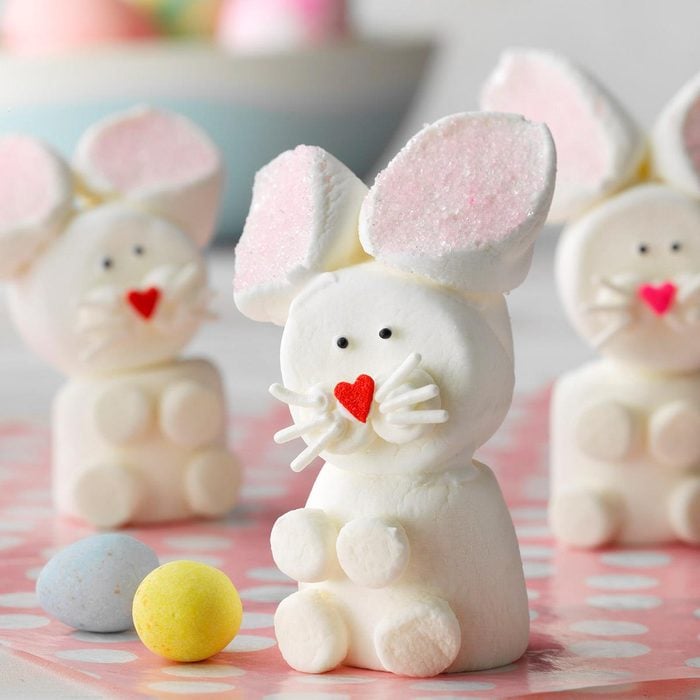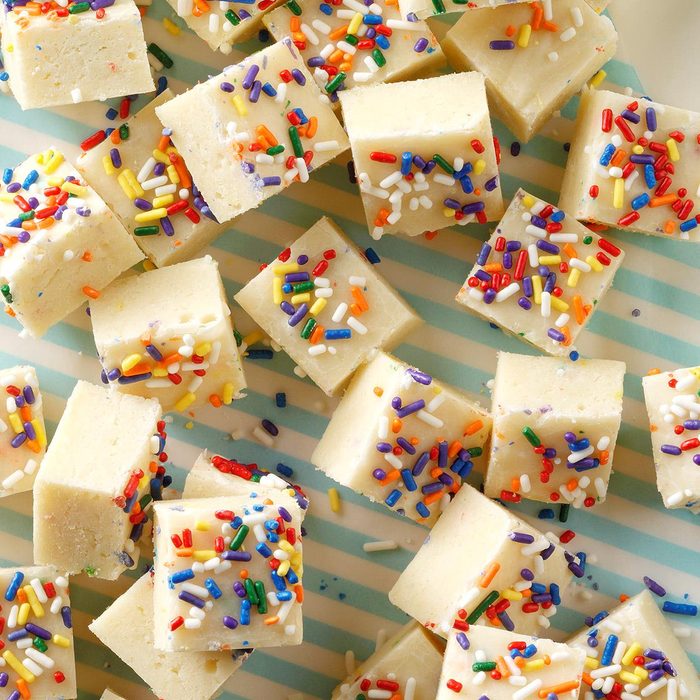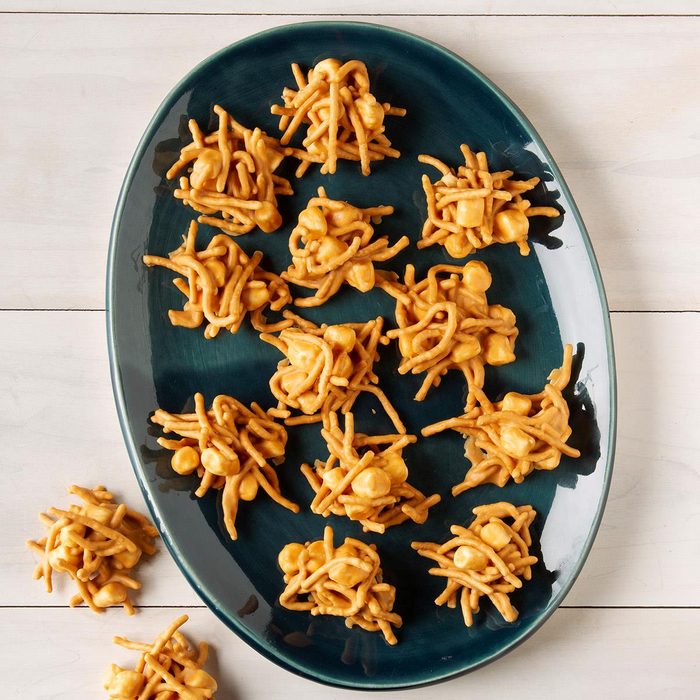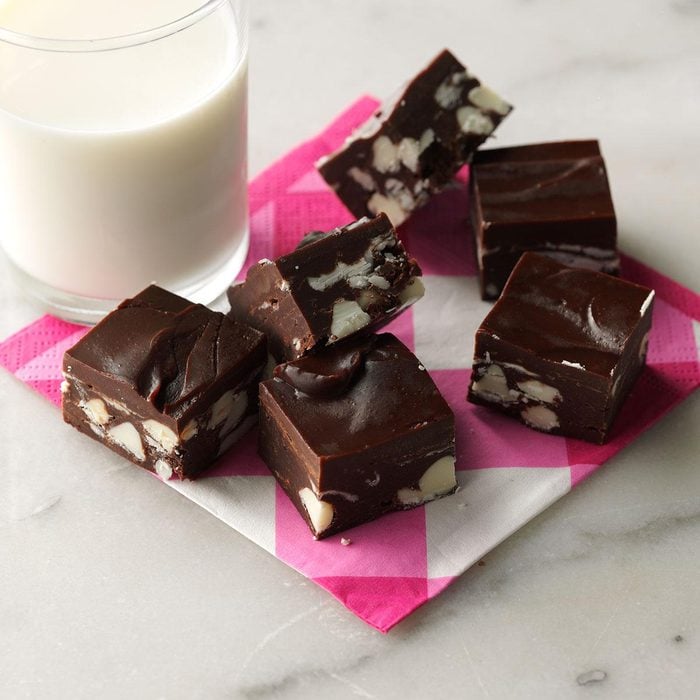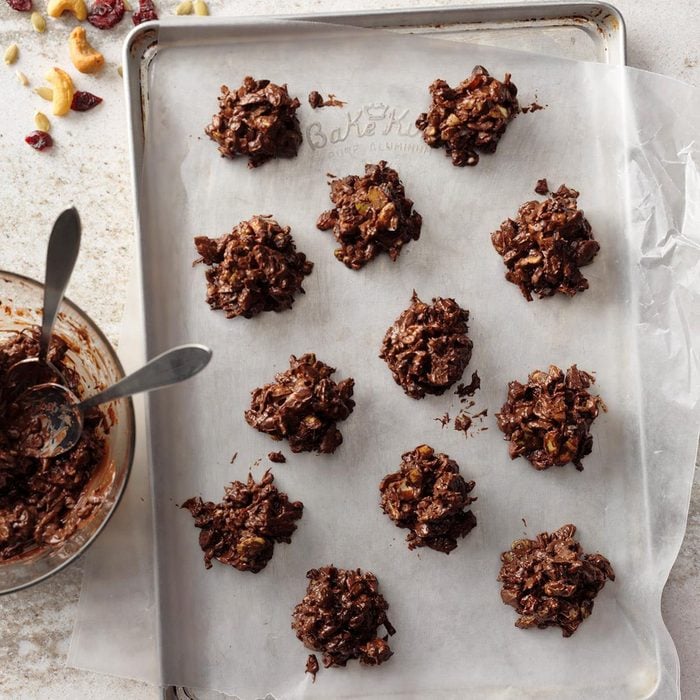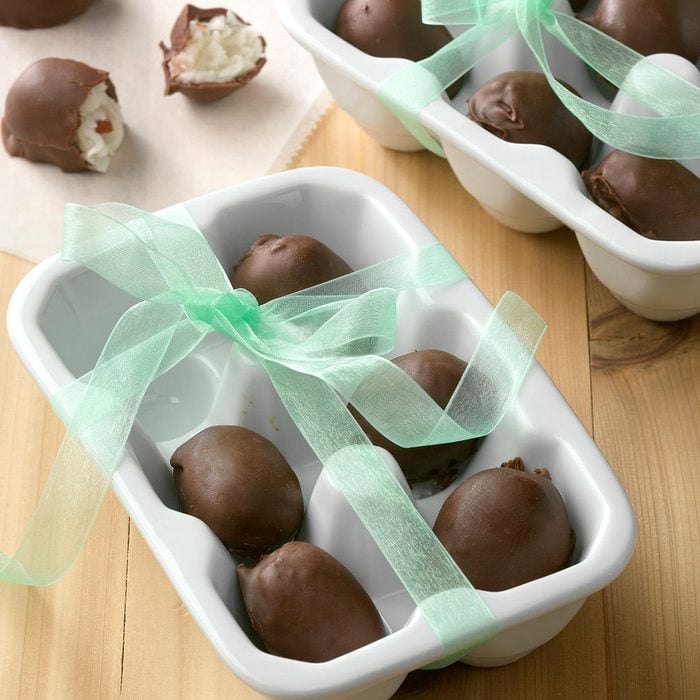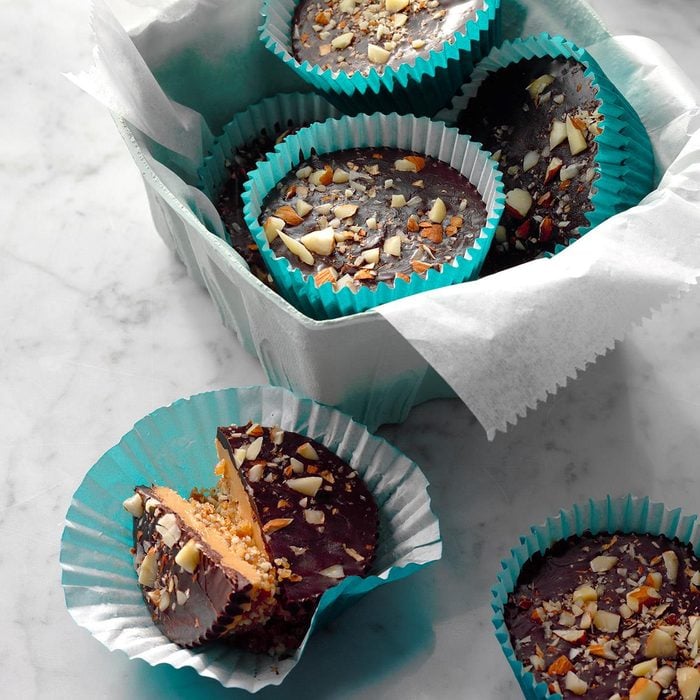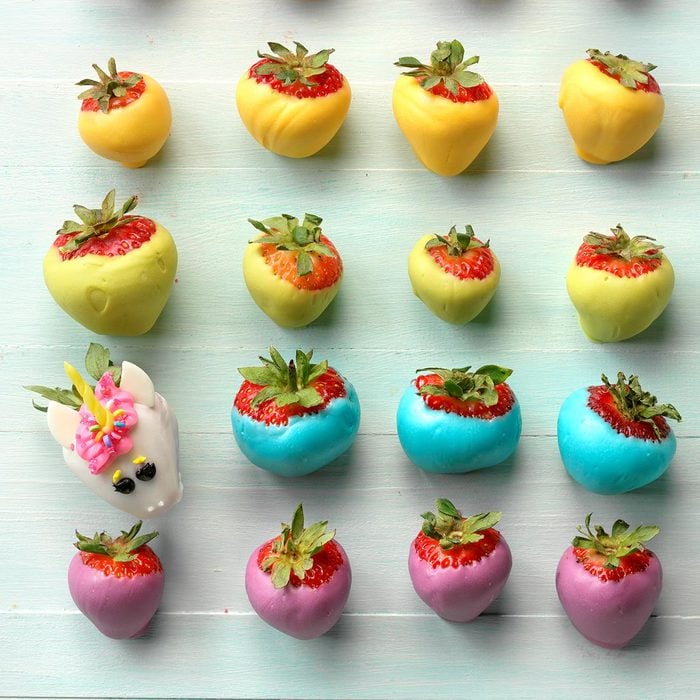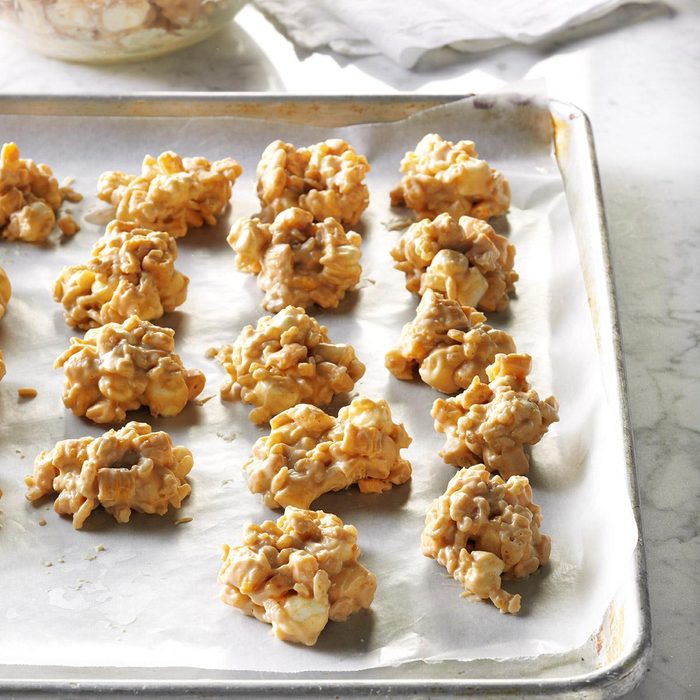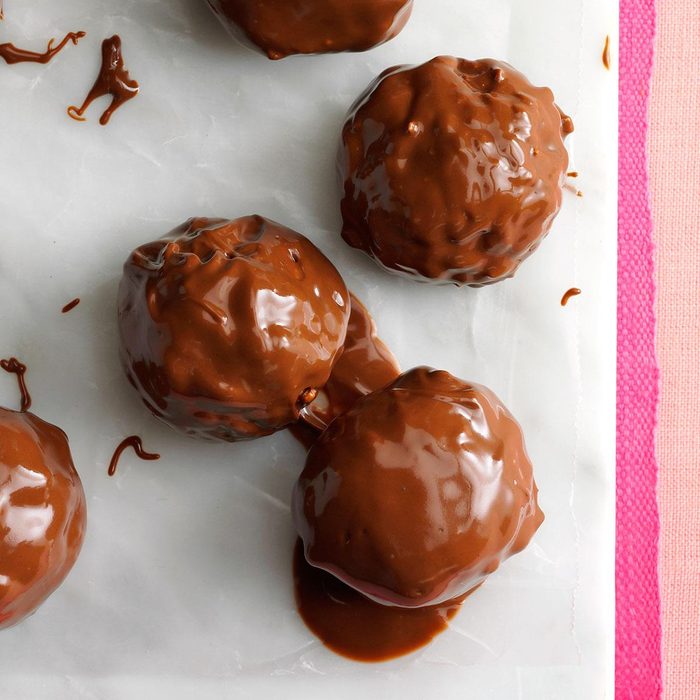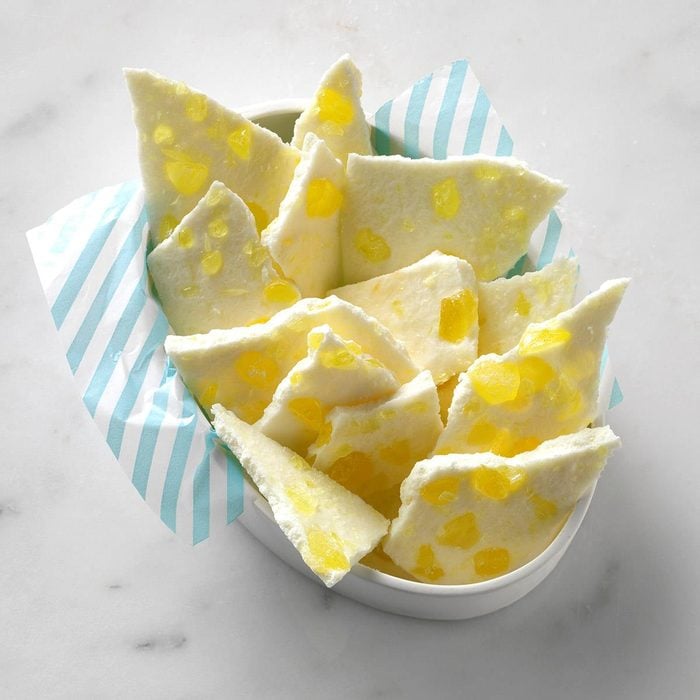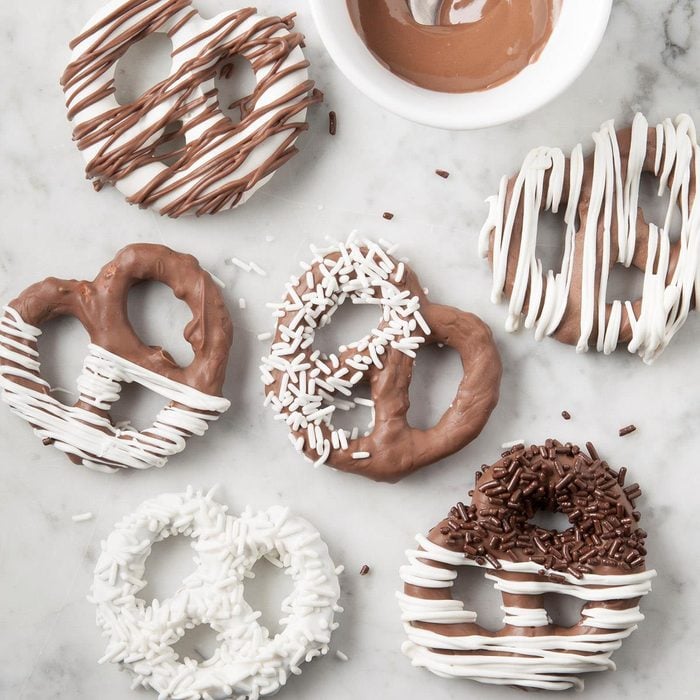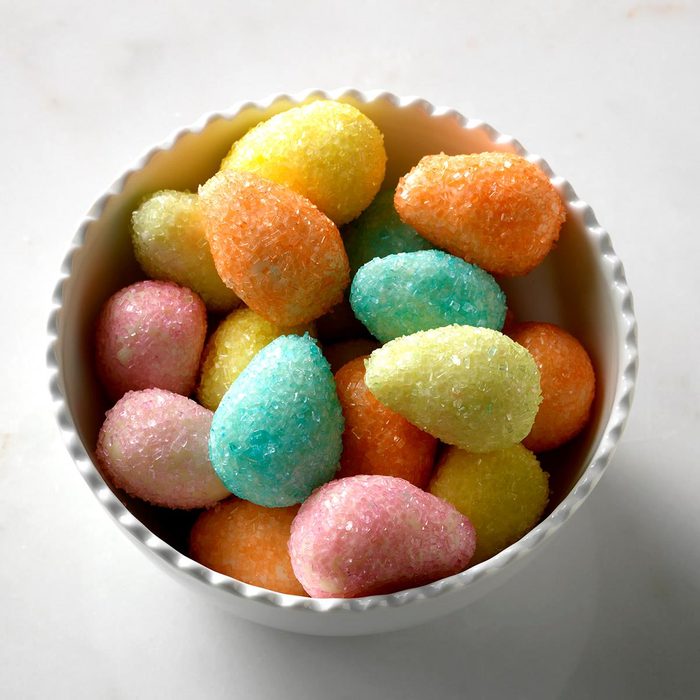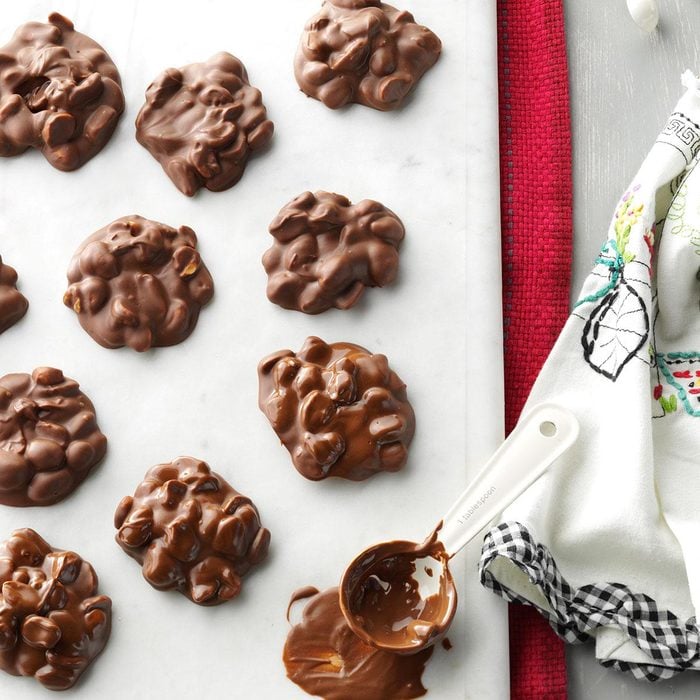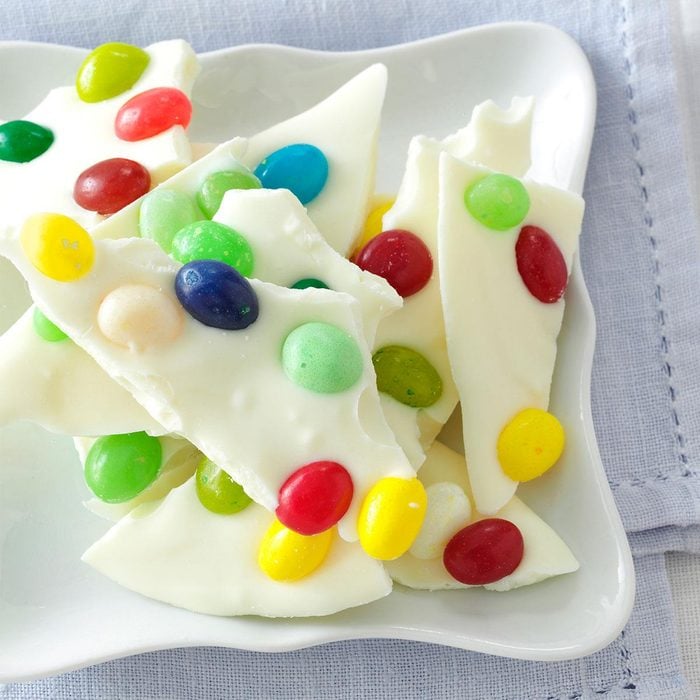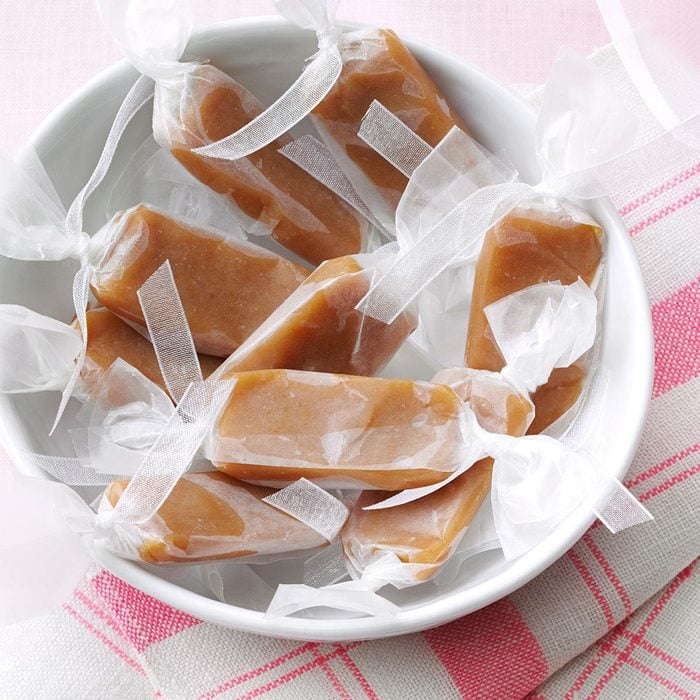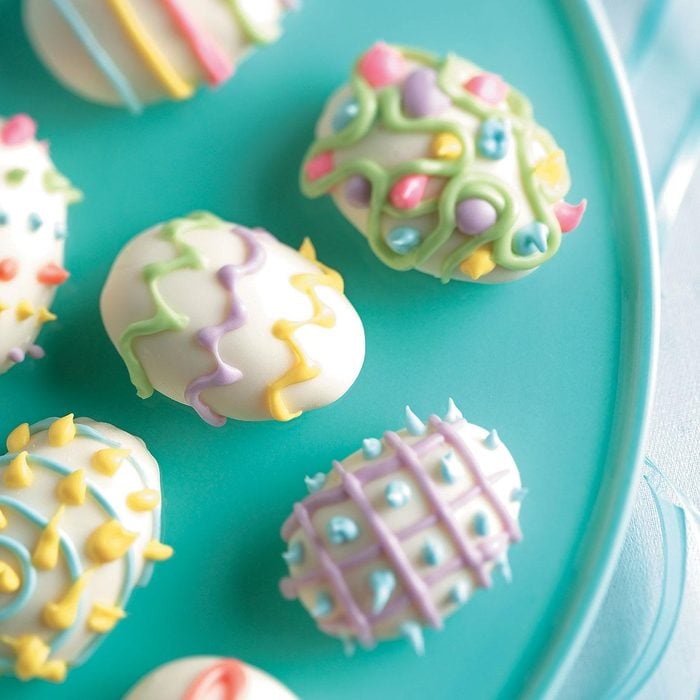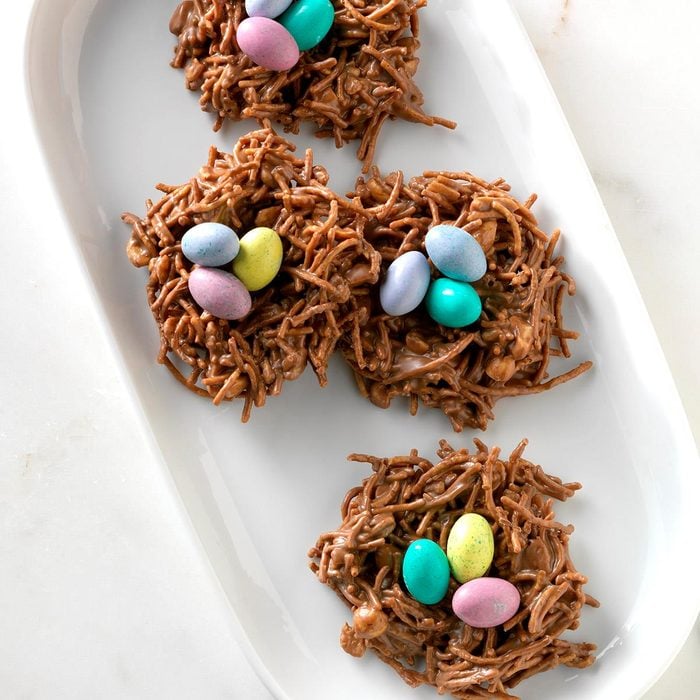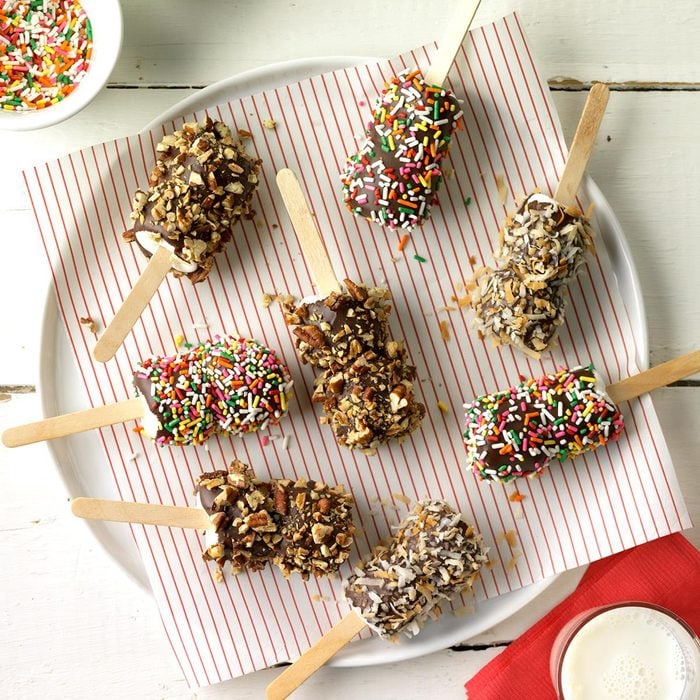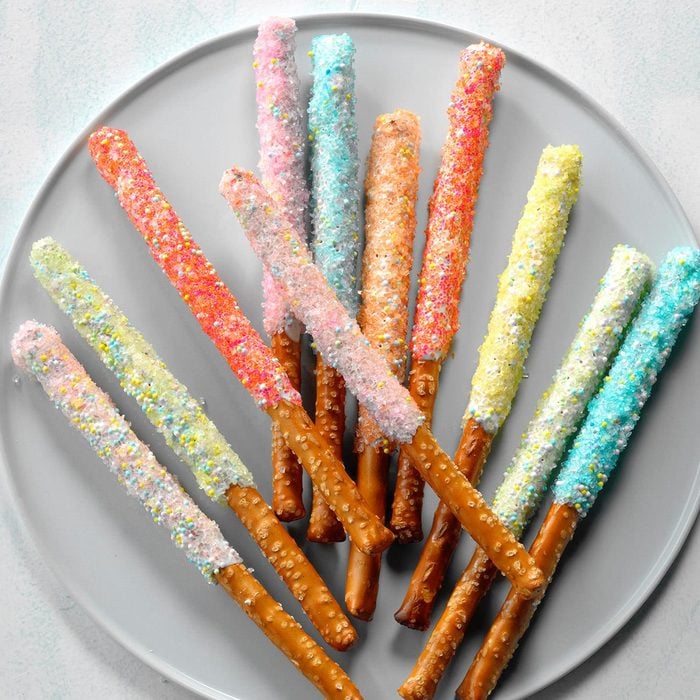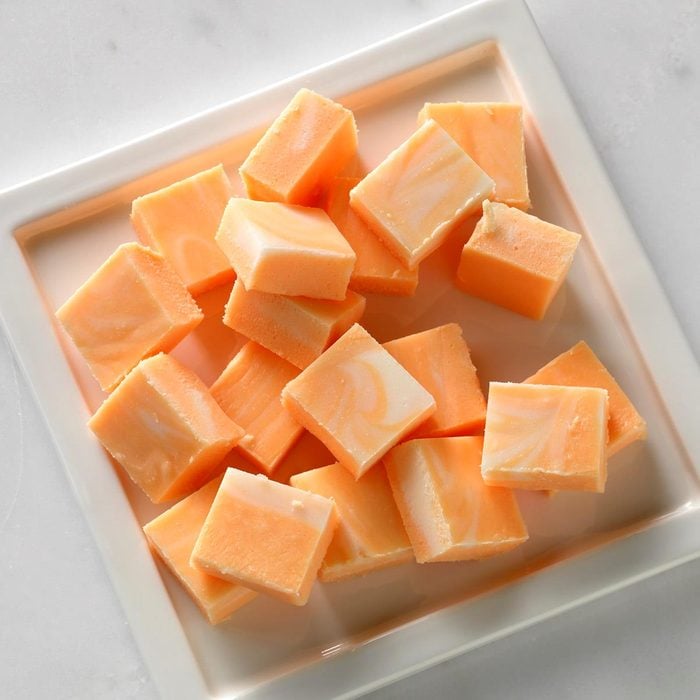Peanut Butter Easter Eggs
Get the kids involved in making these
chocolate and peanut buttery
easter treats, well worth the sticky fingers! —Mary Joyce Johnson, Upper Darby, Pennsylvania
Go to Recipe
Coconut Egg NestsLooking for an
Easter activity that kids will enjoy assembling and eating? Try these sweet birds nest cookies. They're a snap to make and call for just a few ingredients. —Tonya Hamrick, Wallace, West Virginia
Marshmallow Easter EggsI've been making these wonderful marshmallow Easter eggs for years. These candies are a big hit with marshmallow lovers. —Betty Claycomb, Alverton, Pennsylvania
Peanut Butter Fudge CupsMy husband often travels during the week, and this fast-to-fix microwave peanut butter fudge recipe is perfect for just my 2-year-old and me. —Lori Brow, Manhattan, Illinois.
Homemade Chocolate Easter EggsI roll out these chocolate Easter eggs when the weather gets warm. The recipe is over 35 years old; my high school economics teacher had us make it as a class project. Sometimes I substitute butterscotch or vanilla pudding for the chocolate. —Julie Warren, Conyers, Georgia
To balance out all the sweets, make sure to have plenty of
appetizers, entrees, seasonal sides and other
Easter recipes at the ready.
Bunny TailsMy granddaughters and I came up with this clever and easy idea for Easter. —Kelly Ciepluch, Kenosha, Wisconsin
Bird's Nest TreatsI make this birds nest recipe in the spring when the birds are starting to build their own nests. They are so easy to make and disappear just as fast. —Pam Painter, Poseyville, Indiana
Chocolate Angel Food CandyAlso called fairy food or sponge candy, this candy is crunchy, honeycombed, chocolate-covered and irresistible. You might want to hide it until Christmas! —Geralyn Emmerich, Hubertus, Wisconsin
Marshmallow PuffsWith peanut butter, chocolate and marshmallows, these treats were very popular with our three kids as they were growing up—and now I make them for our two grandchildren. They're perfect for the holidays when time is so precious. —Dody Cagenello, Simsbury, Connecticut
Black Cherry Swirl FudgeThis colorful treat is sure to satisfy the sweetest tooth in any family! It's always been a favorite with my nine kids, eight grandkids and my Bible study group. I vary the soft-drink flavors to get colors that match other holidays during the year. —Pauletta Bushnell, Lebanon, Oregon
Crispy Peanut Butter BallsI make more than 40 different types of treats during the holidays for friends and family. These crispy peanut butter balls with crispy rice cereal are one of my favorite candies to give away as gifts.—Liz David, St. Catharines, Ontario
Bird NestsThis is a fun, kid-friendly recipe I pulled together a few years ago. My kids love helping me make these. —Jessica Boivin, Nekoosa, Wisconsin
Coconut JoysIf you like coconut, you’ll love these no-bake, no-fuss sweets. They are cute as can be and make a satisfying after-school snack to keep in the fridge. —Flo Burtnett, North Gage, Oklahoma
Candy Bar FudgeMy manager at work, who knows I like to try new treat recipes, shared this one with me. I've made this chewy and chocolaty fudge many times since. Packed with nuts and caramel, it's like a candy bar. Everyone who's tried it loves it. —Lois Freeman, Oxford, Michigan
Easter Bunny TreatsOur whole family has fun making these bunny-riffic treats together. They are just so cute! —Holly Jost, Manitowoc, Wisconsin
Salted Peanut RollsA Christmas gift of homemade candy is always a hit with sweet tooths. I dip these peanut rolls in chocolate, but they're yummy plain, too. —Elizabeth Hokanson, Arborg, Manitoba. Check out these
resurrection rolls that will surprise and delight kids of all ages.
Sprinkle FudgeThis decadent birthday cake fudge is the perfect thing to make your big day special. Or prepare it ahead and package it as a surprise gift for a friend. —Rashanda Cobbins, Milwaukee, Wisconsin
Haystack Cookies with Peanut ButterPeanut butter haystacks are one of my favorite
easy Easter desserts. I love to serve them to guests because they marvel at how something so simple tastes so good! —Starrlette Howard, Ogden, Utah
Dark Chocolate Raspberry FudgeSomething about the combination of dark chocolate and raspberry is just so addicting. This fudge makes a heartfelt homemade gift, or just a treat that's worth sharing. —Barbara Lento, Houston, Pennsylvania
Trail Mix ClustersThese delicious snacks make
wonderful gifts, and although they look and taste like they came from an expensive chocolate shop, they couldn't be more guilt-free. The dried fruit and nuts are heart-healthy and full of fiber. Bet you can't eat just one! —Alina Niemi, Honolulu, Hawaii
Pretzel Strawberry BarkThis is my candy version of the classic strawberry pretzel dessert. It uses ruby chocolate, which is fairly new on the market. If you can't find it, you can substitute white chocolate in its place. —
James Schend,
Dairy Freed
Coconut Almond CandyThe secret ingredient in this homemade candy is a true surprise—no one tasting these delicious morsels will guess what’s in the sweet, creamy filling! —Katrina Smith, Lawrence, Kansas
Nut Butter CupsMy indulgent, nutty treat is simple to make and looks fabulous. At our house, we use all-natural ingredients for them. —Courtney Stultz, Weir, Kansas
Rainbow StrawberriesDip fresh strawberries in melted candy-coated discs to create a rainbow of color. Or get adventurous and make a unicorn. The creative possibilities are endless. —Taste of Home Test Kitchen, Milwaukee, Wisconsin
Crunchy Candy ClustersThese cereal and marshmallow clusters are so simple that I make them for the holidays each year, as my family looks forward to them. —Faye O'Bryan, Owensboro, Kentucky
Peeps HouseCreate a sweet house for your favorite Easter basket treat. Use pastel candies to decorate the roof and nest. —Taste of Home Test Kitchen, Milwaukee, Wisconsin
Coconut Creme ChocolatesI'm a proud wife, mom of three and grandma of many. I've cooked many things over the years, including these marshmallowy chocolates. —Dolores Wilder, Texas City, Texas
Lemon BarkI wasn't a fan of white chocolate until I made this candy. It's tangy, sweet and creamy all at the same time. The bark was a lovely treat during a springtime shower but would be nice year-round. —Diana Wing, Bountiful, Utah
Chocolate-Covered PretzelsThese chocolate-covered pretzels came from my grandma, who loves to make candy and treats for my students. I have followed in her footsteps and make these for people at work and for other family members. —Aimee Worth, Fair Oaks, California
White Chocolate Easter Egg CandiesCandy making can be easy! Have kids help roll the candies in sprinkles, colored sugar or jimmies. Store in an airtight container in the refrigerator. —Taste of Home Test Kitchen
Chocolaty Peanut ClustersI turn to my slow cooker to prepare these convenient chocolate treats. Making candies couldn't be any easier! —Pam Posey, Waterloo, South Carolina
Jelly Bean BarkHomemade Easter candy really doesn't get easier than this. It's so simple—all you need are three ingredients, a microwave and a pan! It makes a perfect gift. —Mavis Dement, Marcus, Iowa
Soft Chewy CaramelsOne of my first experiences with cooking was helping my mother make these caramels. We'd make up to 12 batches each year. Today, I do at least 95 percent of the cooking at home, but my wife does much of the baking. —Robert Sprenkle, Hurst, Texas
Orange GumdropsI get nothing but rave reviews when I make these gumdrops and usually have to prepare three batches. The refreshing orange flavor is a nice change from the usual chocolate holiday candies. —Becky Burch, Marceline, Missouri
Chocolate-Covered EggsThese pretty little candies beat any store-bought variety hands down! Decorating them can take as little or as much effort as you like. The looks of delight on the faces of those who try them make every minute worth it. —Louise Oberfoell, Bowman, North Dakota
Turtle Dove NestsInspired by the traditional carol "The Twelve Days of Christmas," our Test Kitchen staff created these cute chocolate nests. With jelly bean eggs, they would make fun treats for Easter, too. —Taste of Home Test Kitchen, Greendale, Wisconsin
Pinwheel MintsBoth my grandmother and my mom used to make these eye-catching confections as a replacement for ordinary mints. When I offer them at parties, guests tell me the candies are wonderful, and then ask how I created the pretty swirl pattern. —Marilou Roth, Milford, Nebraska
Marshmallow PopsMaking these pops is a fun activity for a children's party because any age can participate. Customize them for holidays or special occasions by rolling them in coordinating colored sprinkles. —Marcia Porch, Winter Park, Florida
Magic WandsThese fun and colorful wands don't need to be made by a magician to be magical. You can change the colors to fit any
party theme. —Renee Schwebach, Dumont, Minnesota
Marbled Orange FudgeThis decadent treat doesn't last long at our house. The Creamsicle flavor of this soft fudge brings on the smiles. Bright orange and marshmallow swirls make it a perfect takealong for events and get-togethers. —Diane Wampler, Morristown, Tennessee






















